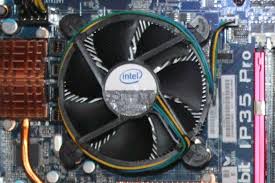What is a “computer generation”? Generation 1: Tube
 In our era of multiprocessing and distributed computing, the once seemingly important division of computers into generations has already been forgotten a little. The first generation is tube computers, the second is transistor computers, the third is integrated circuit computers, and the fourth is microprocessor-based computers.
In our era of multiprocessing and distributed computing, the once seemingly important division of computers into generations has already been forgotten a little. The first generation is tube computers, the second is transistor computers, the third is integrated circuit computers, and the fourth is microprocessor-based computers.
In the beginning there were ferrite rings and electron tubes. The direct access memory, or RAM, which was called RAM (the random access memory, or simply “memory”) as a girl, consisted of ferrite rings. Each ring was stitched with several windings. The write current went along one, the read current on the other, and the recovery current on the third. Ferrite (ferromagnet), from which the ring consisted, was brought into one of two stable states, which were interpreted as 0 or 1. The memory was collected in cubes. One cube of memory usually consisted of one or two kiloslov. True, then the words were measured not in bytes, but in bits. In BESM-6, the word length was 48 bits, or, if so far, bits.
Tens of thousands of electronic lamps, a floor, or even several floors of a building, filled with cabinets with equipment consuming power in excess of hundreds of kilowatts. And continuous operation. If the computer was turned off, then to start it was necessary not only to supply power – to synchronize the elements, a long work of a large team of specialists was required. And once launched, the computer worked and worked, consuming hundreds of kilowatt-hours of electricity, storing data on a computer with magnetic drums and entering data from keyboards, toggle switches and from punch cards and punch tape into the computer, giving the results of calculations to the printer, on the same punch tape, or temporarily storing them on magnetic drums. It was then that the term “bug” appeared, meaning in our time a mistake in software. When the engineers of those ancient times conducted the next launch of the computer, the causes of inoperability found during commissioning were noted in the journal. The computer consisted of a huge number of boards connected by wires, and ate a lot of electricity. Electron tubes required a solid current for heating. And if a cockroach got in contact at such a time, it simply burned out and, becoming coal, could well short-circuit some part of the computer circuit. And so in the magazine the inscriptions appeared: “A bug was found.” Over time, when computers changed and cockroaches stopped burning in them, the search for bugs turned into just a troubleshooting. Over time, the cars became smaller, they already occupied only part of the engine room and began to consume not hundreds, but only a few kilowatts. And the data was already presented to them not only on the carrier media, but also on magnetic tapes. And they began to store them not only on cubes of ferrite rings, but also on magnetic drums. And then – and on magnetic disks. The Soviet MESM (small electronic computer), created in 1950, contained 6,000 electron tubes and consumed 15 kW. At the same time, it performed about 3000 operations per second.
IBM prepared in 1954 for serial production of IBM 650 computers. The total weight with the power supply unit is over 2 tons. It was housed in two cabinets measuring 1.5 × 0.9 × 1.8 meters. It was half a million dollars then. Memory on a magnetic drum – 2000 words of 10 categories. In total, more than 2000 such machines were sold. In 1956, the same IBM company began selling the first magnetic disk. The memory capacity is up to 5 MB, the price is $ 50,000. In the USSR, the best 2nd generation computer is BESM-6. Its speed was up to 1,000,000 operations per second. 367 such machines were produced. However, to consider it only a second-generation computer would not be entirely correct. At first it was produced on lamps, then they switched to semiconductors, preserving the organization and the general scheme. There was even a version of BESM-6, produced for the Elbrus project – already on integrated circuits. And her input / output devices have changed – from typewriters and input from punched cards to monitors, input from punched tapes and magnetic tapes. To store data in the machine, magnetic drums and magnetic disks were used. Actually, the first generation of computers ended on this – instead of lamps, transistors came. Although tube computers were produced until the 70s. The question was not in the present of the product, but in its usefulness to the consumer. Moreover, the room where the lamp computer was located, could not be heated: the included computer translated into heat almost all the energy consumed.




